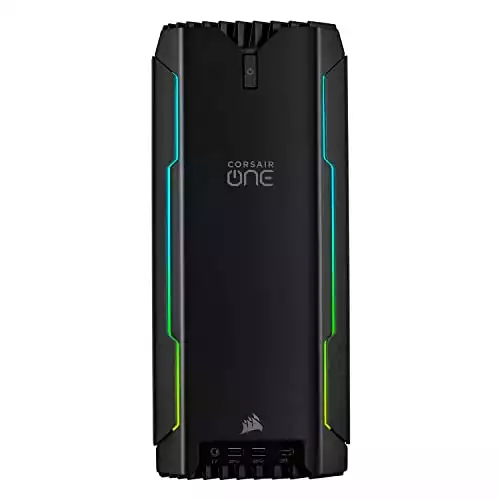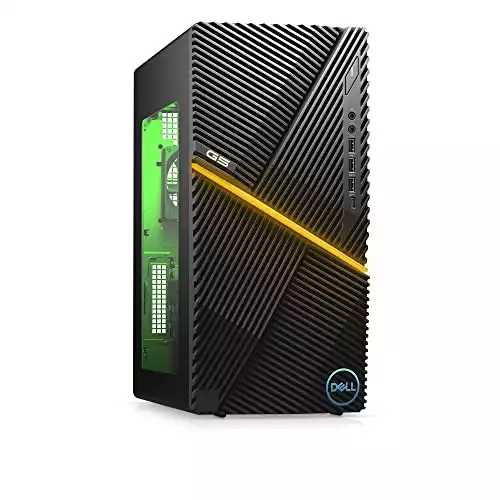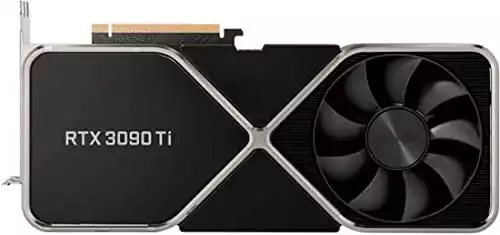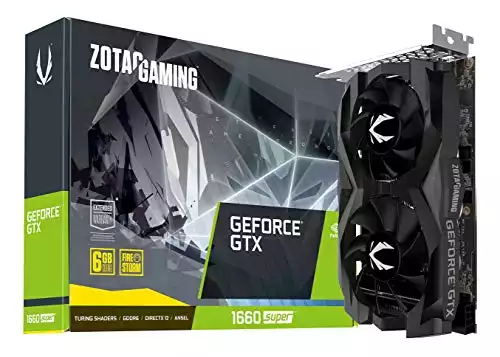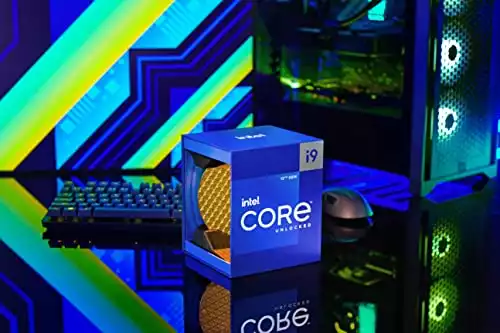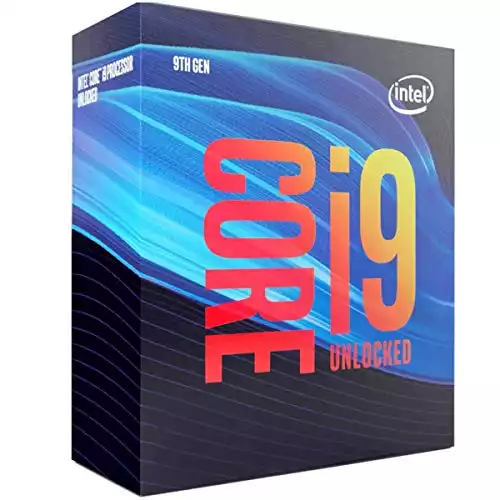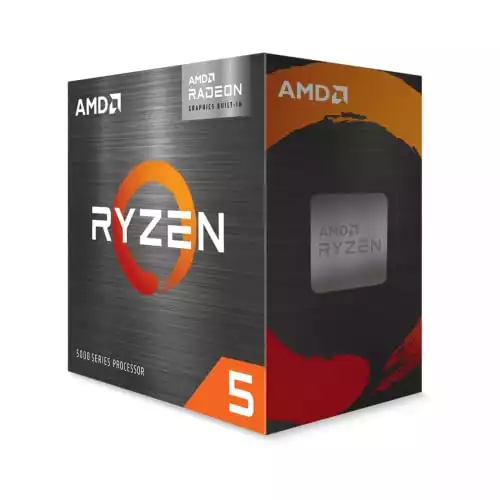There is a lot to think about when buying a PC for sim racing in terms of the specs and requirements you need. There are a few things that matter a lot more than the rest, and so knowing what to look for in a good sim racing PC will make it much easier to choose the right one for you.
The 6 main specs & requirements you should look for in a sim racing PC are:
- GPU: Minimum 2GB VRAM / Ideally 4GB+
- CPU: Minimum 4 cores / Ideally 6+
- RAM: Minimum 8GB / Ideally 16GB+
- Storage: Minimum 512GB SSD / Ideally 1TB+
- Cooling: Ideally liquid cooling / Air cooling usually enough
- Ports: 3+ USB ports / Multiple HDMI or DisplayPorts
Each of these specs play an important role in choosing your sim racing PC, and some of them will really dictate what kind of experience you can have. We will go into each specification in more detail below, and explain why each one is important to consider when choosing a sim racing PC.
A Quick Note About This Article
This article is for those that are looking to buy a pre-built sim racing PC and for those looking to build a PC. The idea is to try and help you learn what to look for when buying a pre-built retail PC or the components to build your own. This will help to make sure that you know exactly what your specific setup will need.
There is not necessarily a correlation between experience level and whether or not you choose to build your own PC. There are so many options on the market, and you will definitely be able to find one with the right specs for your needs. We go into each spec in more detail below, which should make buying a pre-built sim racing PC much easier for you. Below are a few of our favorite options to get you started on your search.
The Best Pre-Built Sim Racing PCs
- • Lots of RAM and storage
- • Powerful GPU and CPU
- • Plenty of ports
- • Incredibly powerful PC
- • Huge selection of ports
- • Lots of configurations
What GPU To Look For In A Sim Racing PC
First up, we have the GPU. This is the Graphics Processing Unit, and it is also often called the graphics card. The GPU is one of the most important parts of your gaming PC setup, as it will dictate a lot of the aspects that determine how well the PC performs when handling games. GPUs range in price from very little to a lot of money, so we will discuss some of the main options.
But first, let’s outline why the GPU is so important. Sim racing games are not by any means the most power intensive, but they can still put some strain on your PC components. The first issue that a mediocre GPU will present tends to be with the frame rate. The frame rate is how many images the PC can display on the screen per second, usually quoted in frames per second (fps).
High Frame Rates Are Ideal
In order to have smooth gameplay, you need your PC to be able to ideally provide at least 60 frames per second. Any lower and you may experience some jumping in the images, and if you are looking to play in VR you will probably want closer to 90 fps. The frames per second you actually see will be affected by other things such as the monitor (and its refresh rate), but the GPU is the most important.
Aside from simply providing high refresh rates, a strong GPU will also allow for VR gaming and high-resolution triple monitor setups. If you are looking for a fully immersive sim racing experience, you will most likely be looking into at least one of these options, if not a decent ultrawide screen. So, a high-quality GPU is essential.
Key Things To Look For
Two key stats to look at are the clock speed and the video RAM (or VRAM). Your clock speed will go a long way to determining the fps at which your sim racing games will run. VRAM is important for various different reasons, and it particularly affects how well your game runs at higher resolutions.
Increasing the VRAM will have a minimal effect by itself at lower resolutions, but it still needs to be at a high enough base level to support a given frame rate.
More Advanced Graphics
Other more technical aspects of the gameplay will also be dictated by the GPU that you opt for. Ray tracing is an advanced graphical technique that allows for the simulation of object interactions in the game by tracing the path of the in-game light. This is fairly GPU intensive, but it can make for some truly beautiful graphics.
Aside from the visually tangible performance perks, a good sim racing GPU also takes the strain off of the other parts of your PC. They come with their own rapid video memory, which takes some of the pressure off your RAM, and you will also benefit from a reduction in the load that the CPU has to bear as the GPU does its own processing of the graphics.
Quality Over Lower Price Every Time
It is definitely best to go for the best quality you can afford rather than the cheapest option. This is because you will want your PC to last for a long time and to be compatible with all of your favourite games, as well as those that will be released in the future. So, we recommend going for a more intermediate level GPU.
The cheapest options will limit the frame rates of your games and how they look (with cheaper graphics cards rarely offering ray tracing for example). More intermediate options can add VR and triple screen support, while the most advanced (and most expensive) options will allow for high-resolution triple screen setups and intense VR sim racing.
Graphics cards for sim racing can cost thousands of dollars at the high end, so you need to weigh up the advantages of these with the advantages of spending that kind of money on the rest of your setup instead. For example, would you benefit more from a $1,500 graphics card or a decent direct drive wheel? Consider this when making your choices!
The Best GPUs For Sim Racing
- • Incredibly powerful GPU
- • Best for 4K triple screen setups
- • Plenty of memory
- • Super high clock speed
- • Great value for money
- • Supports three 4K displays
- • Budget friendly
- • High clock speed
- • Ideal for beginners
Choosing The Right CPU For Sim Racing
Let’s now consider the CPU, or Central Processing Unit. This is often thought of as the brain of the computer, as it processes the information provided by the game you are playing along with the input from you as the player. AI racers, the environment you are racing in, and all other simulations are handled by the CPU, and then displayed with the help of the GPU.
CPUs come in as many varieties as GPUs, and they are often quoted in terms of the number of cores they contain. As a general rule, the more cores the better, with the minimum for a decent sim racing PC being 4 cores. 8 cores are desirable, with some processors even offering 16+ cores. However, these ones are beyond the scope of what you likely need as a sim racer.
How Fast Is Your CPU?
Aside from the number of cores, there is also the clock speed to consider. This is usually quoted in GHz and is a measure of how many processing cycles the CPU can perform per second. Although not always an accurate measure of the speed of a processor, it will give you a good idea of the kind of performance you can expect. A decent clock speed is around 3.5GHz to 4GHz.
Then you have to consider the generation of the CPU. There are two main options for sim racing CPUs, and these are the Intel line of processors and the AMD variety. The Intel ones come in varieties such as i3, i5, i7, and i9, while AMD also have their numbered Ryzen series like the Ryzen 3 and 5 options. There are also more specific options within these broad types.
The Bare Minimum
At the very low end of the scale, representing the absolute bare minimum that we would recommend, are the Intel i3 and the Ryzen 3 options. These tend to come with 4 cores and offer clock speeds of around 3.6 GHz. They are ideal for beginners that are okay with slightly lower quality graphics. However, we recommend going a step higher for a more optimal experience.
The Next Step Up
For sim racers that want VR and triple monitor capabilities, and a smoother experience overall, the intermediate tier of CPUs is where you will want to be looking. These won’t drive the price of your PC up too much while giving you much better performance, along with the ability to handle higher-quality graphics and more multitasking as well.
The Intel i5 options and Ryzen 5 series CPUs are ideal for these cases. These tend to offer 6 cores, with clock speeds varying from around 2.6 GHz to 3.6 GHz.
Note: The intermediate level of CPUs will be enough for most sim racers, as they tend to strike a good balance between price and performanceThe Very High End
Finally, at the high end of the CPU market, we have some very expensive options. These will be more than capable of handling any sim racing game you can think of with as many cars as the track can fit! These are really only for those with a big budget that want 4K and/or triple monitor support, and for those that perhaps do a lot of recording and editing as well.
Options include the Intel i7 and Intel i9 ranges, which typically offer 8 and 16+ cores respectively. The Ryzen 7 series and 9 series offer similar specs, and you can go even higher with options like the Threadripper from AMD, but this is overkill for most people.
The Best Sim Racing CPUs
- • Unbelievable performance
- • Overclockable
- • The ultimate sim racing GPU
- • Great multi-threaded performance
- • Plenty of cores
- • Excellent sim racing gameplay
How Much RAM To Go For In A Sim Racing PC
The next important thing to consider is the amount of RAM provided by the PC. This is another aspect that can be finely tuned if you decide to build your own PC. So, what is RAM?
RAM stands for Random Access Memory and can be thought of as the short-term memory of the computer. Although quoted in the same units, gigabytes (GB), as storage (see below), they are two entirely different things. The amount of RAM a PC has will play a vital role in the speed and performance of the computer. More RAM usually means faster and better performance.
How Much Do You Need?
You can usually just about get away with 4GB of RAM, but this is definitely on the minimum end of the scale. Ideally, you will want at least 8GB, but there are 16GB options out there as well, going all the way up to 64GB+. The 16GB options will drive the price up quite substantially, and in reality 8GB will be enough for most sim racers. It is not as simple as more is always better, but it is a key component, nonetheless.
There are different types of RAM as well, with a reasonable place to start being known as DDR3 RAM, although DDR4 and DDR5 will offer better performance. Having more, better quality RAM will allow you to run more applications at one time.
The Speed Counts Too
It is worth noting that the amount of RAM is not the only thing to consider here. There is a speed associated with it as well, which determines how many cycles occur per second, as is the same with the CPUs discussed above. RAM speed is arguably less important than the capacity, with speeds ranging from 2400 MHz to 3600 MHz being more than enough for most sim racers.
In general, you will want to aim for at least 8GB of RAM for a sim racing PC, but you also have to consider the amount of video RAM on your graphics card. In this case, try and aim for 4GB of VRAM, with less being okay and more usually not being worth it. 16GB of RAM will ensure you can handle any racing sim on the market, while 32GB is the ultimate for future proofing but is much more expensive.
There are lots of options out there when it comes to choosing RAM for your sim racing PC, and you may need to opt for specific brands depending on the rest of your PC setup. However, you can check out some of the best 16GB RAM options here.
How Much Storage Do You Need For A Sim Racing PC?
Storage is what some people get a little confused with RAM. Storage is the long-term memory of the PC, and it’s where games are downloaded and files are saved to be accessed at a later date. As with most of the components on this list, more tends to be better.
Not The Same As RAM
Storage is quoted in GB, and like RAM it handles the information in your game. Unlike RAM however, storage is memory that is not wiped when power is lost, and so it’s used for long-term storage such as game files, which can reach upwards of 100GB, as well as your saves and profiles within games. Loading times will be affected by your storage type, rather than by the amount you have.
Different Types Of Storage
There are two different types of storage to choose from, SSD and HDD. HDD stands for Hard Drive Disk and is the traditional storage method for PCs. SSD is a newer technology and it stands for Solid State Drive. The two options differ in terms of speed, capacity and longevity, and so it’s important to consider which option is right for you.
HDDs use a spinning disk to hold memory, while SSDs make use of semiconductor chips and have no moving parts. This makes them generally more durable – and much quieter (silent actually) – than HDDs and less susceptible to physical breakage. Although HDDs have a longer lifespan due to the way they write data, you will most likely be able to use your SSD for as long as you need your PC.
Speed Is Key
Due to the way that these two storage types physically store data, SSDs are faster than HDDs and are therefore a popular option for gamers in general, not just sim racers. Although it will vary by application, SSDs can be much faster than HDDs, and you will notice a difference in loading times as well as boot times, and they will help the PC to run smoother overall.
There are a couple of other things you might want to consider, such as the type of storage device. This is a finer detail, and usually isn’t too important. Essentially this involves the size of the drive, which would only really be an issue if you were building the PC yourself. You can also get what are known as M.2 variants, which are faster than other SSDs, and so can boost performance further.
The Capacity
The most important aspect aside from the speed difference is the difference in storage capacity. Ideally, you want to go for at least a terabyte (1TB) of storage regardless of which type you opt for. HDDs range from around 500GB to 8TB, although there are some options out there with more. Meanwhile, SSDs usually range from around 120GB to 4TB.
The price per gigabyte for HDDs is much lower than that of SSDs. You can expect to buy an external HDD with 500GB of storage for around $20. However, the same capacity SSD will start at around $60. Ideally you want 1-2TB overall, and if you went for just HDD it would cost around $75, while a 2TB SSD will typically set you back around 3 to 4 times that.
Go For A Mix
However, the ideal setup will actually involve both of these options. Games can take up anywhere from a few gigabytes to 100GB+, so you have to work out what you are going to need for your specific gaming habits. If you plan to play a lot of different racing sims, or if you want to store a lot of photos and videos on your PC as well, you will need plenty of storage.
Usually, you will want to opt for around 250-500GB of internal SSD, and then you can add more external storage in the future if you need it. External HDDs are much cheaper but can be more susceptible to damage than external SSDs. Going for a an internal SSD will maximize your speed, and it usually won’t add too much on to the price even at the 500GB level.
As with RAM, there are lots of storage options out there, and the specific one you opt for will largely depend on the rest of your sim racing PC setup. However, you can check out these links for some of the best SSDs and the best HDDs for your sim racing setup.
The Cooling System
The next thing to consider is the cooling system. All pre-built gaming PCs will come with some sort of cooling system, with the cheapest and most common usually being fan cooling systems. There are also liquid cooling systems available, which are usually more expensive but more effective too. Cooling is important regardless of which type you go for, so consider going for higher quality over lower price.
Cooling Is A Must
Cooling inside your PC is essential as there is a lot going on at one time inside the box. If you are playing a power-intensive game at high levels of quality settings, you will be putting a lot of strain on your components. This strain requires a lot of electricity, and it can build up resistance very quickly, releasing heat. Heat will make your components less efficient and it can damage them too.
Air Cooling
Air cooling methods use a mix of fans and metallic plates or pipes to cool down the inner components of the computer. There are some very efficient options out there that not only blow cool air onto the components, but also drive hot air away from them using a series of specially designed fins. Fans can be quite loud however, as well as bulky and often power intensive themselves.
Liquid Cooling
Liquid coolers on the other hand use water to drive heat away from the inner components of the PC. Water is much more effective at transferring heat than air and it makes for a much more efficient cooling system. The water cooling system can also be used to cool specific parts of the PC directly, whereas air cooling systems tend to be less direct, bringing their efficiency down further.
Pricing varies for cooling systems, but liquid cooling tends to be more expensive. It is also more dangerous than air cooling due to the proximity of the water to the live electrical components of the PC. However, pre-built PCs are made with lots of safety precautions in mind and are built to such high standards that this isn’t really an issue if you aren’t building it yourself.
Which Type Of Cooling Do You Need?
As for whether or not you actually need the cooling power of a liquid cooling system, it will be down to your specific gaming habits and requirements. If you plan to race a lot of power-intensive simulators at high graphic settings, you might want to opt for high-end air-cooling systems or even liquid cooling. Casual sim racers can definitely get away with basic air-cooling systems.
How Many Ports Do You Need For A Sim Racing PC?
The final thing to consider when buying a PC for sim racing is the number and type of ports that it has available. You will most likely need at least a few USB 3.0 ports for your peripherals, such as a mouse and a keyboard, as well as your steering wheel and pedals of course. Most PCs of any kind tend to come with at least 2 USB ports, with more than 4 not being uncommon.
Specific Port Requirements
Next up, you might want to consider HDMI ports for connecting external monitors. Ultrawide monitors and triple monitors can use HDMI cables, while you could even connect your TV to your PC through this port too. A lot of PCs will come with at least one HDMI port, while others may come with several.
DisplayPorts are also common for connecting multiple monitors. If you want to connect more than one to create a triple monitor setup, you will need to ensure that your GPU can handle it and that you have enough available ports.
Note: If you want 4K resolution at 120 Hz and your monitor/TV supports it, you'll need HDMI 2.1 rather than 2.0. If you're using DisplayPorts, you'll need at least DP 1.3.Can I Use A Gaming Laptop For Sim Racing?
Now that we have outlined all of the ideal specs for a sim racing PC, you may be wondering whether or not you could use your gaming laptop for sim racing instead. This presents a few more specific considerations, and although you may wish to have portable sim racing capabilities, for the best and most immersive experience, a PC will definitely be the better choice.
Nonetheless, there are some gaming laptops out there that are more than capable of playing your favorite sims. But you’ll normally have to take the hit of a higher price for specs you could get cheaper on a PC, and it’s usually not as practical for connecting your sim racing hardware. You’re also limited in terms of the display, so it’s definitely worth considering opting for a PC instead.
Final Thoughts
It’s hopefully clear by now that there is a lot to think about when buying or building a PC for sim racing! There are a few key components you need to consider, and there are plenty of options for each out there on the market. Doing your own research is key, as you can get a very decent sim racing PC to suit your specific needs for less money than you might think.
I created and have been writing on this site since 2019, collaborating with drivers, coaches, engineers and manufacturers to provide you with the most reliable information about motorsport. I also make beautiful car posters and track posters.


